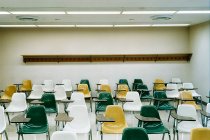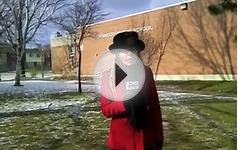 One lesson that winners in all fields learn is that it’s often easier to get to the top than to stay there. In addition to talent, grit, and risk-taking, getting to the top often involves good timing, luck, and even the possible misfortune of others.
One lesson that winners in all fields learn is that it’s often easier to get to the top than to stay there. In addition to talent, grit, and risk-taking, getting to the top often involves good timing, luck, and even the possible misfortune of others.
There’s no security at the top. Leaders face intense and relentless competition; good luck and fortuitous timing are one-time advantages.
This lesson came to mind when I read a recent news report on America’s mediocre performance in the latest round of international student testing: the PISA (Program for International Student Assessment) tests.
Released in December, a new PISA assessment is given every three years, evaluating the performance of 510, 000 15-year-old students in 65 “countries and economies” in math, reading, and science, including 6, 000 students from 161 randomly selected schools in the United States (PDF).
Not surprisingly, key Asian countries and economies ranked high in all three categories. In math, for example, students from Shanghai, Singapore, Taiwan, Hong Kong, and Korea topped the list. In science, Shanghai, Singapore, Japan, Hong Kong, and Finland earned the top five spots.
U.S. students, on the other hand, didn’t impress. They ranked “on par” with the Organisation for Economic Co-operation and Development average in reading and science (17th and 21st, respectively) and below the OECD average in math (26th), positioned with countries such as Lithuania and the Slovak Republic.
One of U.S. students’ biggest weaknesses in math—a subject of particular concern to me—is the “mathematization of a real-world situation.” This means they have difficulty applying mathematical principles and tools to analyze and solve concrete problems and situations.
Also disconcerting is the spread between the number of U.S. students who performed very well on the tests vs. those who scored very poorly. Only 9 percent of American students scored at or near the top in math, while three times that number (26 percent) scored at or near the bottom. The story is similar in science, where just 7 percent of the U.S. students scored at the highest levels, while 18 percent scored at the lowest.






